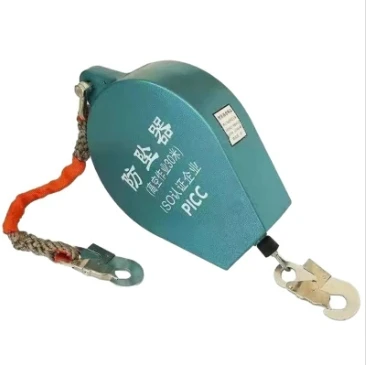


The Importance of Fall Arrest Systems in Workplace Safety
In various industries, particularly those involving construction, maintenance, and elevated work platforms, the risk of falling is a significant hazard that can lead to severe injuries or fatalities. To mitigate these risks, fall arrest systems have become essential tools in ensuring the safety of workers. Understanding the importance of these systems, how they function, and their proper implementation is vital for any organization dedicated to workplace safety.
What is a Fall Arrest System?
A fall arrest system is designed to safely stop a person from falling from a height. It typically consists of a combination of components, including anchor points, harnesses, lanyards, and deceleration devices. The primary function of these systems is to arrest a fall as quickly and gently as possible, reducing the risk of injury. The systems are engineered to ensure that the forces exerted on the body during a fall are within safe limits.
Types of Fall Arrest Systems
There are various types of fall arrest systems, each suited to different situations. The most common include
1. Personal Fall Arrest Systems (PFAS) These are individual systems that typically involve a full-body harness, an energy-absorbing lanyard, and a secure anchor point. They are ideal for situations where workers are exposed to unprotected edges or when working at heights.
2. Guardrails and Safety Nets While strictly not fall arrest systems, guardrails and safety nets can provide passive fall protection by preventing workers from falling in the first place. They are often used in combination with personal fall arrest systems for enhanced safety.
3. Rescue Equipment In addition to fall arrest systems, having proper rescue equipment is crucial. In the event of a fall, emergency response must be swift to prevent further injury or distress.

The Importance of Proper Training
Implementing a fall arrest system is not enough; proper training is essential. Workers must understand how to use the systems effectively and recognize potential hazards that could lead to falls. Training should cover
- Selecting and inspecting fall arrest equipment Workers should know how to choose the right equipment for specific tasks and inspect it for any signs of wear or damage.
- Proper use and attachment Educating workers on how to properly wear and attach harnesses and lanyards is crucial in preventing accidents.
- Emergency procedures Workers should be trained in what to do in the event of a fall, including how to communicate and signal for help.
Legal Considerations and Compliance
Employers are legally obligated to provide a safe work environment, and this includes the proper implementation of fall arrest systems. Regulations such as those enforced by the Occupational Safety and Health Administration (OSHA) mandate specific standards for fall protection. Failure to comply can result in significant penalties, and more importantly, can put workers' lives at risk.
Conclusion
Fall arrest systems are a vital component of workplace safety in environments where the risk of falling exists. When effectively implemented and coupled with proper training and compliance with legal standards, these systems can significantly reduce the risk of serious injuries and save lives. By prioritizing fall protection, organizations not only fulfill their legal obligations but also demonstrate a commitment to the well-being of their workforce. In a world where safety should be paramount, investing in effective fall arrest systems is an investment in human life and dignity.



